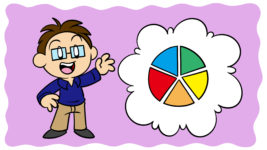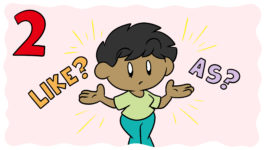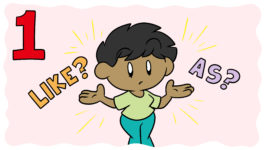Not every character can be a Heathcliff, or even a Lockwood, in fact statistically most of the characters in your novel are going to be minor characters.
Whether its conversations shared with co-workers and family members or altercations with taxi drivers and shop-keepers, your main and secondary characters will spend a lot of time with their minor counterparts.
Though these characters might not be your focus, there’s no reason for them to be two dimensional, or even uninteresting.
Just because a character isn’t the focus of a scene doesn’t mean you can treat them like scenery.
Minor doesn’t mean dull
The problem with minor characters is that they’re there because we need them. While main or secondary characters can be a hundred things wrapped up in one identity, minor characters tend to only be delivery systems for words or events.
When someone is just there to use a turn of phrase that inspires the detective, it can be easy to write them off as a character who doesn’t need fleshing out. The problem is that treating a minor character as a simple tool guarantees that that’s how they’ll come across to the reader.
Do you know, in nine hundred years of time and space, I’ve never met anybody who wasn’t important…
– Steven Moffat, Doctor Who: A Christmas Carol
In real life, no-one is just there for the effect they have on somebody else, and to write truly realistic and absorbing scenes all your characters need to be believable, interesting people.
Perspective
The most important thing to realize about main, secondary and minor characters is that the one factor that defines their role is who the reader is forced to follow.
The main character isn’t always the most interesting or the most relatable, they’re just the ones the writer chooses as the centre of the narrative. Minor characters are minor because they’re only on the periphery of the story which is being told, not because they’re inherently uninteresting.
Everyone is necessarily the hero of his own life story. Hamlet could be told from Polonius’s point of view and called The Tragedy of Polonius, Lord Chamberlain of Denmark. He didn’t think he was a minor character in anything, I daresay.
– John Barth
Readers are incredibly sensitive to two dimensional characters, especially when you stand them next to your complex protagonist. Ironically, failing to characterize your minor characters can draw the reader’s attention to them and make a scene feel less realistic.
Simple fleshing out
So how do you flesh out a character who’s only in the story for one scene? The answer depends on the genre in which you’re writing and the space you’re prepared to dedicate, but here are a few tricks that work for popular authors.
-
The Eccentric
Someone unique enough to stand out, even when they’re only in one chapter. The illusion of complexity is the goal and the easiest way to create it is to present a reader with a character who can’t be understood.
Every character in Lewis Carroll’s Alice’s Adventures in Wonderland is an eccentric, unique in both attitude and appearance. From the miserable Mock Turtle to the sinister Walrus, every character is so strange that the reader believes there’s more to them than they see.
Trying to figure out why the Gryphon is so dismissive is useless, because clearly the character doesn’t operate by rules the reader can understand. This makes a lack of characterization less obvious, as the reader is more inclined to decide the character has an unexplained but existing worldview than deciding they just have no worldview at all.
-
The Hobbyist
Here a specific interest is used to intensely highlight one aspect of a character’s humanity, thereby implying the rest of it. We all have passions and so seeing that passion in a character lends them a quality to which we can relate.
Stephen King is a huge fan of this technique, sometimes ill-advisedly using it as his only characterization of main characters. Whether it’s a love of a particular sport, song, celebrity, car or time period he humanizes a character by showing their immense emotional connection to a single thing. In his fact the novel Needful Things is based on each character receiving the ultimate totem of their individual hobbies.
Exposing this kind of raw, private emotion may only highlight one very limited aspect of a character but having seen something so deep the reader is prepared to infer more. In the same way as many small acts of characterization can imply a deeper, unseen humanity, one example of intense humanity can create the illusion of detail.
-
The Stereotype
We’re all familiar with certain stereotypes. While no-one is that simple in real life, using stereotypes to define minor characters is easily done and effective. A dumb, competitive body builder is instantly recognizable to the audience, as are a kindly granny and a ditzy cheerleader.
Using the understood appearance, vocabulary and idiosyncrasies of stereotypes helps the reader associate a minor character with a personality they already understand in depth.
For a more advanced use, set up a stereotype and then throw in one factor that runs against the grain. Maybe the cheerleader is a chess prodigy or the granny has a prison record. While it’s incredibly simple to establish a character as a stereotype (by a stereotype’s nature readers are prone to quickly accepting someone’s ‘type’) simply adding one contrary detail can have a considerable effect. The realization that there is more to a character than first assumed feels enough like finding out what more there actually is to satisfy readers.
The above tricks are effective but at the end of the day, they are tricks. Thankfully it’s possible to achieve real characterization for minor characters (the kind that stands up to scrutiny) but it takes a bit more work.
Real characterization
The key to writing great characters, no matter how vital they are to the plot, is to know more about them than you tell the reader.
Think of all the factors that have contributed to your personality: parents, religion, class, artistic tastes, life events, etc. There is a common misunderstanding that you should know these things about a character because it will help the reader accept them as a real person, but in fact they’re more useful for you as a writer to convey them as a consistent personality.
If you know how and why someone became the way they are then you’re less likely to write an ‘out of character’ moment. This knowledge also adds to your writing. Likes, dislikes and even idiosyncrasies occur organically because you understand a character at a core level.
While it would be foolish to suggest you should know your minor characters as well as your protagonists, there is a version of this technique which will work for you.
The technique
Decide on three characteristics that define your minor character. Are they kind or mean? Rich or poor? Do they have children? Are they in a relationship? Do they have a pet? Are they religious? Do they have strong political beliefs? Any three will do, so long as they’re major factors of who a person is.
Now decide what kind of day the minor character has had up until the moment you write about them. Choose two things that made it that kind of day. These things can be minor: waking up late, being complemented, remembering a joke that made them laugh.
Now ask yourself how the person you defined would deal with the day they’re having. Allow that to color their interaction with the protagonist.
This may not seem like much but it adds a great deal of subtle characterization. There’s a huge difference between writing a stereotypically corrupt policeman and one who abuses his power to compensate for a failing marriage, all the while thinking he’s the hero. Real people see the world from their own perspective and the difference between a minor character who is there to be an obstacle and one who has their own motivations is palpable even in the shortest interactions.
In Ed McBain’s 87th Precinct series, every minor character has a backstory. The stories are peppered with subtle details that make every character feel like part of the wider world. The police never simply turn up to interview someone, they catch them just returning or going somewhere. On the way to see a friend who is exactly the kind of person they’d associate with. Or if they do interrupt someone in leisure time, they’re watching or reading something that is consistent with their characterization.
Even the chief protagonist’s nanny is briefly given a history of surviving terrorist attacks in Ireland and caring for her younger brothers, meshing perfectly with the personality of someone who has decided to leave their home country and care for other people’s children as a profession. She’s strict because she grew up keeping children safe in a dangerous place and yet the information on her past is superfluous: even before it’s revealed she is a recognizable and consistent character. McBain clearly knew why she is who she is because the information isn’t a revelation, it just fits.
This is the end goal of characterizing your minor characters. To write individuals who seem so real, so accurate as people, that the reader simply accepts their presence. It is the highest accolade of the minor character to simply make sense, to fit, and thus to mask the mechanics of the fantastic story they happen to have wandered into.
For information on making the most of your main and secondary characters check out How Many Characters Should A Novel Have? to find out why a smaller cast is almost always better. Or for more tips on conveying depth without vast paragraphs of explanation try Are You Killing Your Book With Too Much Detail?
Do you have any tips for fleshing out minor characters, or has a favorite author blown you away by populating their world with real people? Let us know in the comments.






7 thoughts on “Don’t Let Fake Minor Characters Ruin Your Story”
Robert, you’ll never surprise me enough for your passion and knowledge. Thanks for sharing them both.
This was the technique I used for my second short story: I wrote down the prior life of my characters, just to know who they were, before the main events. This makes me hope I am doing it the right way!
Hi boostwriter,
Thanks very much! I think you’re definitely going about it the right way. The believably that’s added just through the confidence of knowing your characters is amazing, and it gives you so many potential routes to use in the future.
Best,
Rob
Christopher Paolini does this wonderfully in his inheritance series with his sister Angela. She is a side character but is more interesting and fun to read about than many of the major players. I guess that’s partly because she’s based on a family member he knows well, but it’s also cause he does such a great job making her background so elusive and her actions so eccentric.
Hi Stacey,
Thanks for another great example!
Best,
Rob
Just treat it like real life when writing the “extras” in your story. If as a person, you sit in a cafe waiting for your drink and meal, you stare out of the window, are distracted by a tweet, look annoyed over your shoulder if someone is rowdy.
An extra character should be presented through the eyes of the protagonist, with the protagonist’s opinion of them. If your friend turned up and happened to know the rowdy person, then introduces you to them, then they become a person of consequence.
If this was a scene in a cafe for your character, you just gave yourself permission to add a bit extra story to flesh it up a bit, because the interaction between your protagonist’s friend and that rowdy person who happens to be their friend, allows for the reader to understand better why that person is your protagonist’s friend in the first place…
That’s how I approach minor characters in the books I write. For me they are the “psychological factor” in the story. If I want to show that a character has compassion, that character might smile at a small child that just happens to run past at that moment…
Hi Nathalie,
Thanks for your thoughts. Some great ideas on subtle character development.
Best,
Rob